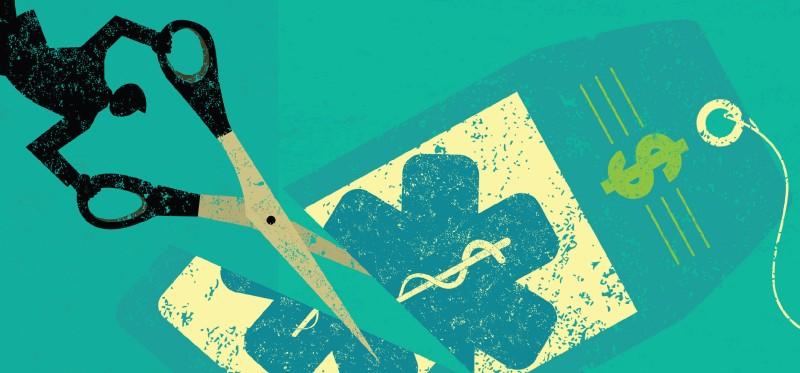During my recent panel discussion at the World Healthcare Congress, we had an interesting discussion about the implications of price transparency.
Today’s healthcare pricing is totally screwed up, with almost no transparency. Next time you or someone close to you stays in a hospital, for instance, just try to piece together what it actually cost, and what particular costs were attributable to which particular elements of care.
In his book America’s Bitter Pill, lawyer Stephen Brill points out that many of the charges healthcare providers attach to complicated procedures are not just indecipherable, but indefensible. For instance, in recounting how one chemotherapy patient’s invoice was rendered by the University of Texas’s MD Anderson Cancer Center, Brill says that one of the first itemized charges was
“1 acetaminophen tabs 325 mg.” The charge was only $1.50, but it was for a generic version of a Tylenol pill. You can buy 100 of them on Amazon for $1.49 even without a hospital’s purchasing power.
But, he said, the markups got even bolder on the second page of this patient’s bill:
$13,702 for “1 rituximab inj 660 mg.” That’s an injection of 660 milligrams of a cancer wonder drug called Rituxan. The average price paid by all hospitals for this dose is about $4,000. However, MD Anderson probably gets a volume discount that would make its cost $3,000 to $3,500.
Brill then points out that MD Anderson, officially a “non-profit” institution, made an operating profit of $531 million in fiscal 2010, giving it a very respectable 26 percent margin on revenues of $2.05 billion that year.
Stories like this aren’t hard to find when it comes to healthcare pricing, which is so complex and difficult to understand that consumers are, for the most part, just baffled.
So in view of the new “consumerized” healthcare system under the Affordable Care Act, one of the issues our panel debated was whether price transparency would fix this problem. If healthcare providers were required to disclose their complex, difficult-to-understand pricing in a more transparent way, wouldn’t consumers be better off?
Not so fast. There are at least three reasons why price transparency may not work to restrain costs.
First, even though pricing is an important economic signal that allows any free-market economy to work more efficiently, the healthcare system isn’t a free-market system, not by a long shot. Insured consumers have very little incentive to shop for lower-cost procedures or more efficient treatments, because they bear almost no responsibility for their cost. Most co-pays are fixed amounts—$25 per office visit, for instance, or the first $2,000 of a hospital procedure. So even these mechanisms don’t actually “signal” the price.
And, this problem is complicated by the fact that in most consumers’ minds price and quality are correlated. If price transparency allows a consumer to discover that one provider charges $10,000 while another charges just $2,000 for the same procedure, which one would the consumer judge to be of higher quality?
Second, price transparency will encourage lower-priced suppliers to raise their prices. Panelist Vicki Whichard, customer experience officer for Blue Cross Blue Shield of South Carolina, said that her organization, which dominates the healthcare payer space in that state, has an initiative to introduce price transparency in the market, and one of the effects has been that it drives up costs as well as holding them down. She cited an example in which a particular procedure is priced at, say, $2,000 by one provider, while another charges just $700 for the same thing. Under these circumstances, she said, the less expensive supplier will in many cases raise its price. Why? Because it can, that’s why.
Her story reminded me of what Dan Ariely said in his book Predictably Irrational, with respect to the skyrocketing level of senior executive pay at public companies. From about 1978 to 1993, the average pay for a public company CEO climbed from just 36 times the average worker’s pay to more than 130 times. So in order to “shame” companies into holding back on lavish pay for senior executives, the Securities and Exchange Commission began requiring publicly held firms to disclose the pay of their top five executives in their financial reports. The result? CEO pay shot upward even faster in just a few years, to nearly 400 times the average worker’s pay! Ariely’s hypothesis: By making a senior executive’s pay directly comparable with other senior executives at other public companies, the SEC unintentionally generated a feeding frenzy of comparison shopping by executives. You can’t blame a CEO for competing with other CEOs to have the best package, and this became a lot easier once the SEC made the information freely available.
And third, the healthcare payments process is hindered by both a matrix of detailed regulations and the overly complex contractual relationships that now exist between payers, providers, and patients. The result is that even well-heeled providers such as MD Anderson sometimes have to take a loss on certain kinds of procedures or care, or they have to bear risks for which they aren’t being paid adequately. So when they do have pricing power, they want to charge more in order to make up for these money-losing processes.
The point of all this is that price transparency is not necessarily going to be a panacea for controlling healthcare costs, even if it does highlight the kind of egregious and unjustified charges that are regularly documented by investigative journalists and others.
Also, check out the most recent issue of our eNewsletter.















